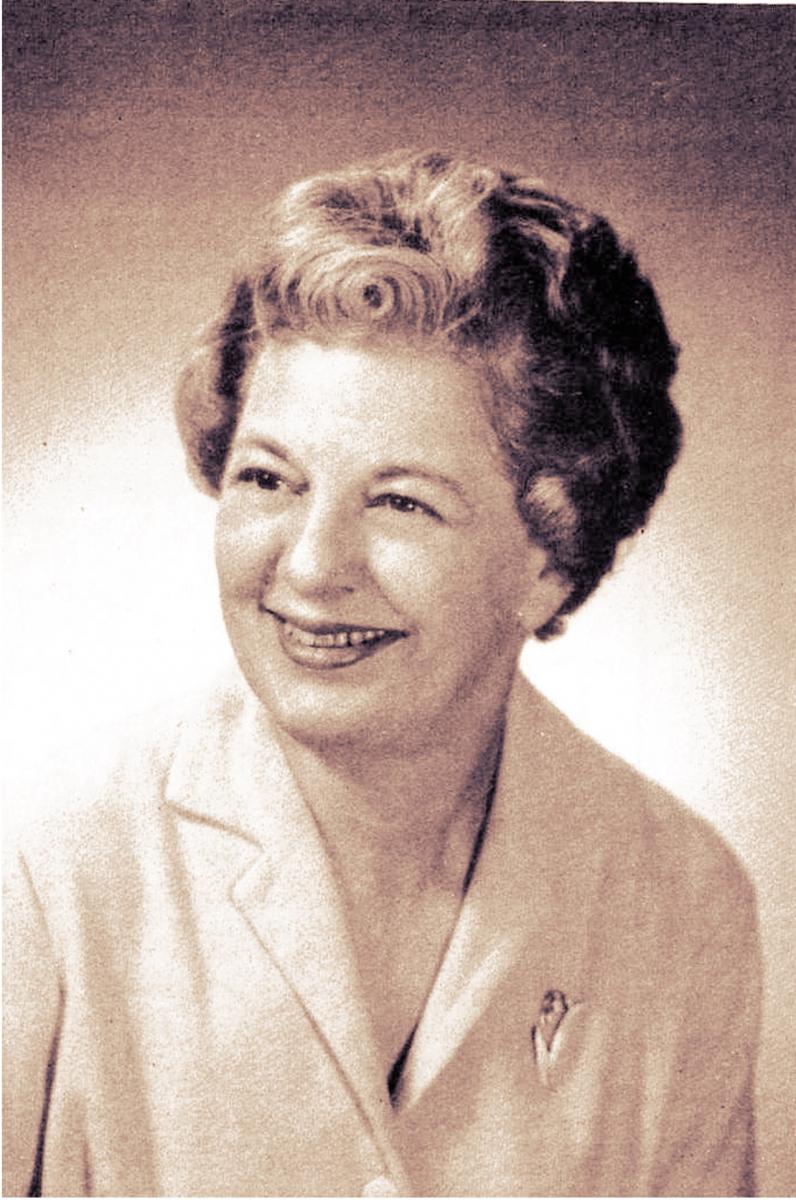Dr. Charles Van Riper, the renowned speech therapist, and person who stutters,
became internationally known as a pioneer in the development of speech pathology,
and is widely known to most SLPs through their academic work at University.
Lesser known is his wife, Catherine Jane “Katy” “C.J.” Hull Van Riper,
was a pioneer in her own right.
 Catherine Jane “Katy” “C.J.” Hull Van Riper was born in December 1909 in Washington, Iowa, to Dr. Henry Clay Hull and Hallie Berdo Hull. According to her husband’s biography of her, C.J., also known as Katy, “was precocious intellectually, or at least verbally,” leading to her graduation with honors from Washington High School as valedictorian.
Catherine Jane “Katy” “C.J.” Hull Van Riper was born in December 1909 in Washington, Iowa, to Dr. Henry Clay Hull and Hallie Berdo Hull. According to her husband’s biography of her, C.J., also known as Katy, “was precocious intellectually, or at least verbally,” leading to her graduation with honors from Washington High School as valedictorian.
After carefully considering where to attend college, she chose the familiar campus of the University of Iowa, where she had participated in contests and attended football games when younger—a decision that was “foreordained” according to her biography, “she was an Iowan with a capital I,” it reads.
During her junior year, she enrolled in a speech pathology class, a new field of study at the university and one which seemed to fulfill her burgeoning interest is psychiatry and speech. “She did very well in it,” reads her biography, “and found it utterly fascinating.”
In her senior year, C.J. concentrated her studies in speech pathology. She observed others doing therapy in East Hall, and worked intensively with a few organic cases, several clients with articulation problems, and some foreign accent cases. She did not do any therapy with stutterers [sic] but observed in the stuttering clinic where she was enrolled.
She was the first woman to graduate in the new field of speech pathology.
Following advice from the head of the Speech Pathology department to “get away and meet new challenges,” she was turned down for the first job to which she applied.
She then applied for a job at the University of Minnesota where a new speech clinic had recently been started. “To be on the faculty of a major university (and with only a B.A. degree), especially for a woman,” wrote Dr. Van Riper several decades ago, “was almost unheard of.”
He recalls Katy’s deliberations about the position:
"…she had some ambivalence once the position was hers. She would have to leave her beloved Iowa. On the other hand it was good to have a chance to be a pioneer in speech therapy and she most certainly was that. Many years later when I asked her to speak at the University of Iowa, the master of ceremonies introduced me by saying, ‘Our speaker this morning is the husband of Catherine Hull, the first undergraduate major in speech correction.'" — Dr. Van Riper.
During her time at the University of Minnesota, she taught many of Dr. Bryngelson’s classes -- also a pioneer in speech therapy – and helped him with his research and edited his professional articles. Her salary for these many duties was $1,200 per year. “It was the perfect job for me,” she wrote, “with new challenges every day.”
 For five years, Katy taught and was in charge of the speech clinic at the University of Minnesota, one of the first such clinics in the country. After her marriage to Charles in 1936, she played a large part in organizing and the administering of the clinic at Western State Normal School in Kalamazoo, Michigan, alongside her husband, taking over his classes when he could not attend.
For five years, Katy taught and was in charge of the speech clinic at the University of Minnesota, one of the first such clinics in the country. After her marriage to Charles in 1936, she played a large part in organizing and the administering of the clinic at Western State Normal School in Kalamazoo, Michigan, alongside her husband, taking over his classes when he could not attend.
“I could not have pioneered the field of speech pathology without her,” wrote Dr. Van Riper at the time of her death in 1984. “My students and stutterers [sic] called her the Earth Mother because they felt the impact of her caring. ‘Unto their needs, not mine,’ was the principle that governed her days… Some of my own impact has come through the many books I have written trying to provide tools for our profession. Without her aid, I couldn’t have written a one of them.”
When Dr. Van Riper no longer needed help at the clinic, and her own children were grown, Katy volunteered her services at the Kalamazoo Child Guidance Clinic and worked there part-time for many years. “She just had to serve others,” said Dr. Van Riper.
“I’d like to be remembered at the moment you see a beautiful sunset, a perfect flower, a starry night, a sad-eyed Springer, a child, or someone who needs a loving touch or an encouraging word,” she said late in her life.
We remember her as a pioneer in speech therapy. Thank you, Katy
From the Spring 2024 Magazine






 Podcast
Podcast Sign Up
Sign Up Virtual Learning
Virtual Learning Online CEUs
Online CEUs Streaming Video Library
Streaming Video Library